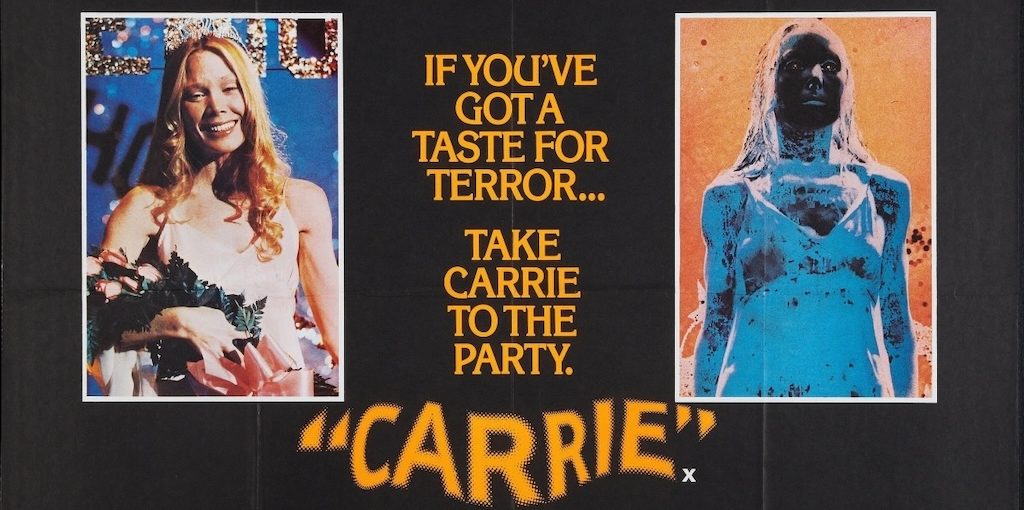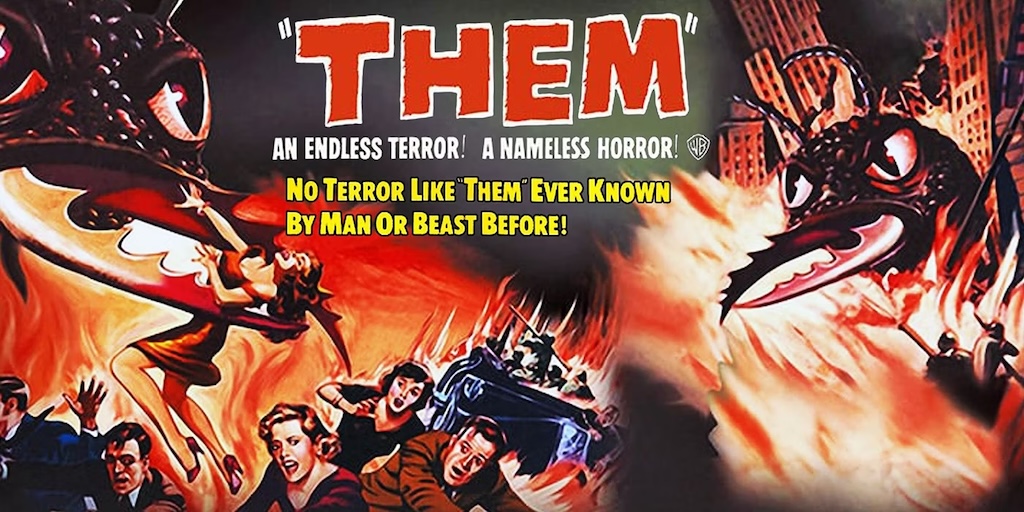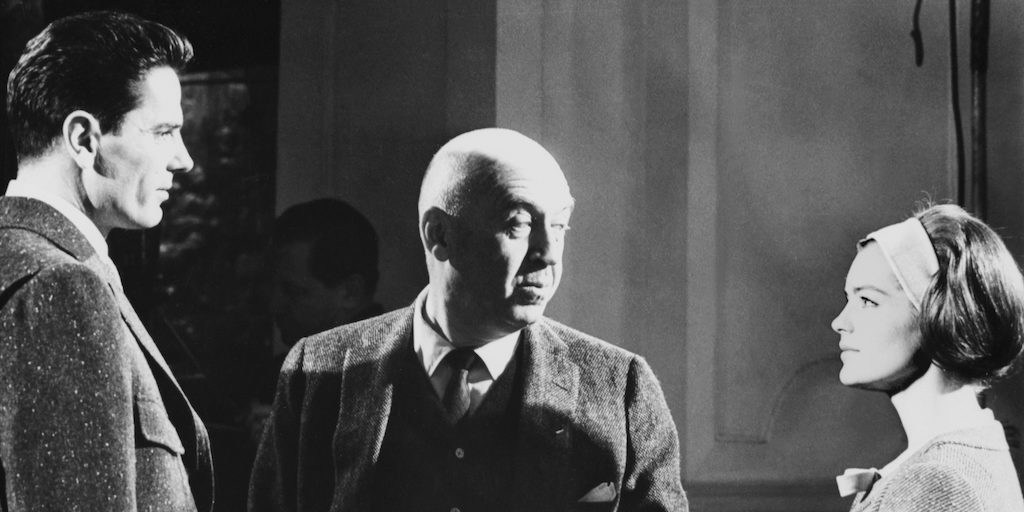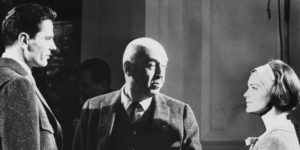CLEVERNESS AND BANALITY
There are bad movies and bad movies. The worst kind of bad movies are those pretending to be good and Oppenheimer is one of them. A megalomaniacal director that passes for a successor to Kubrick (okay, Kubrick was megalomaniacal himself for sure), Christopher Nolan goes around saying he is inspired by Borges (which calls for another commentary on the foolishness of those repeating such declarations) and that the scenes in black and white of his film are “objective”, while those shot in color are “subjective” when cinema has no way to distinguish between them both. Although it is true that there are some scenes in Oppenheimer that are different from any other and have to do with the protagonist’s visions, dreams or hallucinations: in them we see the face of Cillian Murphy (one of those actors far too ostensible and passing for great, such as Daniel Day Lewis) being alternated with shots of fire (presumably we are seeing the insides of the atom in a state of fission) or with shots of the victims of the atomic bomb or the less macabre shots of Murphy with the much attractive Florence Pugh naked and making love to him before the commission that has to decide if the physicist gets his authorization renewed so he can access Top Secrets linked to atomic energy.
Oppenheimer takes place in the chronological and political core of the 20th century: It spans from the new physics up to the McCarthyism, passing by World War II and the development of the atomic bomb. Its protagonist serves as some sort of Forrest Gump, although he speaks several languages and has a very high IQ. If something can be said for sure about Oppenheimer (and the film makes every effort to not have a point of view of its own about the character) is that he was always there: studying in Harvard and Cambridge, meeting Max Born, Niels Bohr, Albert Einstein and Werner Heisenberg, teaching quantum physics at Caltech and Berkeley while he studied Vedic texts near the communist party of the 1930’s and being on the military payroll in the 1940’s, in discussions about the nuclear arms race and its reach, in the bed of a few women of his own or others and, above all, as the head of the Manhattan project and the Los Alamos laboratory, in the plains of the New Mexico desert where the first atomic bombs were manufactured, the only ones used so far: a colossal undertaking, a challenge for the greatest scientific minds of the time and for the logistical capabilities of the U.S. Military.
The fact that the atomic bomb has never been used again is the happiest of all negative events in recent history. America made it before Germany, but in due time the Russians caught up to them and that weird unraveling of events continues to be at the heart of debates on global military strategy: it is not the same to bombard the almost surrendered Japanese than the thriving post-war soviets, ever more capable of a massive response. The singularity of the double explosion in Hiroshima and Nagasaki (the discussion about the motives to drop two bombs rather than just one is an interesting moment in the film) is one of the reasons why Oppenheimer’s doubts between militarism and pacifism, between nuclear escalation and restrictive agreements continue to be current debates, just like his oscillation between his sympathy for communists and the denunciation of his collaborators. Oppenheimer, the film, takes care of these matters, but uses them as a backdrop to a spectacle that presumes will have an audience not much interested in these somewhat abstract issues, not even the morbid beauty of the paradox in which Oppenheimer is opposed to the construction of even more powerful bombs is unheard by Truman’s administration and its successors, but his logic of the benefits of the equilibrium will end up imposing itself in the long term. This supposed audience, which deep down does not exist as anything else but as a dialect of Hollywood’s interest and as a marketing element (it is curious, and even new, the pressure to see Oppenheimer back-to-back with Barbie), demands more ostensibly dramatic elements, be it the impressionism of its images or a conventional story, that can be easily followed like the intrigues for an inheritance in a miniseries.
And Nolan does everything in his power for that spectacle to not disappoint that audience invented in a laboratory. On one hand, he includes all the impressionist, decorative and grandiose images that are necessary, be it symphonies in red, dead or naked. On the other hand, he resorts to one of the most employed screenwriting tricks in the history of American cinema: that of resolving the dramatic conflict in a trial. Although not happy with one trial, Nolan uses two. In fact (and this is repeated in the dialogue), these are not precisely trials, since they are not about proving anything, but are testimonies before different representatives of the administration. It is known that Oppenheimer’s career as a public servant was cut short and his life suffered a major blow because his famous security clearance was never renewed due to accusations pending over him because of previous associations with the communists. That is how a prosecutor manages to humiliate him before a committee of the Atomic Energy Commission. But ending the film on that defeat would have saddened the audience, therefore the movie invents some sort of second ending, a happy ending. Not because Oppenheimer gets rehabilitated but because he gets an indirect payback on his greatest enemy, Rear Admiral Lewis Strauss, a hawk that had informed on Oppenheimer for Hoover’s FBI, seemingly moved by a defeat in an administrative discussion and prepared the interrogation that disqualified him. The film invests a lot of time in Straus, going as far as to transform this very secondary character into an essential one. If Oppenheimer maintains himself to the end as an enigma, Strauss (portrayed by Robert Downey Jr.) becomes transparent as a villain (as it occurs in the most conventional cinema) and ends up revealing his psychopathic nature until reaching a scene reminiscent of Jack Nicholson in A Few Good Men, portraying a Colonel that justifies the torture of his own soldiers. Oppenheimer lasts more than three hours because it stretches Strauss’ role and, in the same way it leaves in the dark several episodes in Oppenheimer’s life and even leaves aside far more interesting subjects (such as the sympathetic majority for communists among the Berkeley scientists or the effective existence of soviet spies in Los Alamos), it concentrates in the rivalry between Oppenheimer and Strauss, whom years after terminating Oppenheimer’s future loses the nomination to be Secretary of Commerce to Eisenhower before the Senate thanks to the resentment of the scientists who accuse him of being a manipulator. This zone of the movie is a flawed one and Nolan accentuates a tendency of combining the excessive with the irrelevant.
Far more solid is the story about the building of the bomb and the suspense of its testing in Los Alamos, which includes a night scene under the rain between Oppenheimer and General Groves and is reminiscent of the classical moment in Jaws before the hunting. In that part, the elaboration of the movie is similar to the story it is telling: it is an intense collective effort undertaken by very qualified personnel. But that epic, the typical cinematic epic of the achievement as a team, is surrounded by bureaucracy, by dark zones and spurious objectives as the film itself, lost in its need of achieving far too many goals at the same time.
Nolan, like Oppenheimer, is willing to do anything, even allowing a small story of personal rivalry to take over the film and blur its historical context. As for another very debatable trick (even though some great filmmakers have used it before), Nolan shoots a faux shot. When at the beginning of the film, in a scene that takes place after the war, Oppenheimer comes across Einstein near a lake in Princeton, he gives the impression that he does not salute him. Towards the end, we will know that it is not the case, but rather the two scientists retaking a previous dialogue in which Oppenheimer, with the development of the bomb in full swing, consults Einstein on the possibility that the chain reaction provoked by the fission of the atom cannot be stopped, reaches the atmosphere and ends with all life in the planet (the hypothesis turns out to be false). In this second encounter, Einstein uses one of those typical phrases invented by screenwriters and tells him “Do you remember what you asked me, if the world could go to hell? Well, that is what is happening”. He means the manufacturing of the Hydrogen bomb and other more potent devices, with which both disagree on. But when Strauss comes across a concerned Einstein he deduces he is not saluting him because Oppenheimer was talking ill of him behind his back. This arbitrary trifle, kept secret thanks to the faux shot, triggers Strauss’ payback on Oppenheimer and covers over an hour of Oppenheimer’s running time.
Those making films today are smart and prepared people. The research team behind Oppenheimer read American Prometheus, the original book by Kai Bird and Martin Sherwood (whose grandiloquent title sets the stage for Nolan’s film) and consulted with many other sources. These are people who do their homework and, if they allow themselves any alteration of history, is with narrative purposes and goes in a direction which the Hollywood community is willing to distort the facts (for example, that Truman’s character is resolved as a caricature of a brute ignorant politician, but Roosevelt is spoken of with the utmost respect and even includes a forced mention to JFK).
But these people making movies also grasp the updated technology of scripts, in which there are no heroes but superheroes or antiheroes and that is why in Oppenheimer, unlike old biopics, there are only shady characters. There is not a single noble character in the film, with the possible exception of General Groves, portrayed by Matt Damon, quite likely because Damon cannot give up his nice guy face: everybody is duplicitous, everybody betrays, everybody has skeletons in their closet, everybody bears a face that denotes their lives will end up in tragedy. Is what conventions dictate about a movie that tackles the issue of the atomic bomb, something that contaminates the protagonists and leaves them all with their hands bloody, but without any of it splattering onto the audience. To sustain this comfortable idea, Nolan needs that among so many bad people there has to be a super bad guy which has to be punished as he deserves. Oppenheimer is a hymn to cleverness, but also one to banality.
![]()
(United Kingdom, United States, 2023)
Script, direction: Christopher Nolan. Cast: Cillian Murphy, Emily Blunt, Robert Downey Jr., Alden Ehrenreich, Tony Goldwyn,Kenneth Brannagh, Florence Pugh, Matt Damon, Gary Oldman. Producers: Christopher Nolan, Charles Roven, Emma Thomas. Length: 180 minutos.













